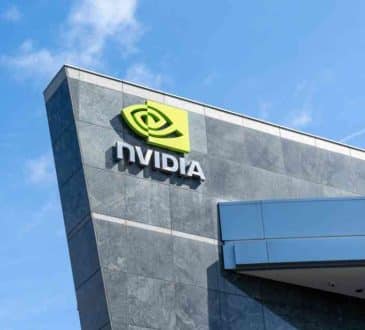How to Prevent Digital Transformation Accelerating to Failure

It has been well publicized how the pandemic has accelerated digital transformation across the world. What does not receive as much attention is that between 70 to 84% of digital transformations are failing. Becoming digitally-driven has become essential for many organizations not to thrive, but to survive, in today’s turbulent business environment. In this article I share three proven best practices to help business leaders overcome digital transformation hurdles from one of the top ten digital transformations of the last decade according to Harvard.
In 2000 our Bridges research revealed that nine out of 10 strategy implementations were failing. Every four years since then there has been a steady improvement in leaders’ ability to implement their strategy, until now! Our current research reveals that even though leaders better understand strategy implementation, less than one in five digital transformations are succeeding. A key reason that contributes to the high failure rate of digital transformation is that it’s not just about implementing a new strategy but also the identification and rapid adoption of new technologies. The other top reasons include the struggle to change the culture, leaders mindset and the recognition that it’s a whole business model transformation
A colleague from Citigroup, Piyush Gupta, is now CEO of a bank in Singapore, called DBS. When he took over in 2009, it was your typical traditional bank. Today it has been identified by the most prestigious banking awards as the world’s best bank. I was fortunate enough to be given exclusive access over 24 months to identify how they successfully transformed from a traditional to a digitally driven organization when all around them were failing.
DBS call their digital transformation the “Digital Wave”. The term wave is used because it interlinks with the previous strategy focused on becoming the Asian Bank of Choice and the latest strategy focused on Sustainability. The Digital Wave consists of three strategic principles to drive the transformation:
- Become Digital to the Core
Making this shift to digital required an expensive investment in their core technology platform as the leadership team saw a need to embrace a complete re-architecting of technology. The Asia Wave was considered a “down payment” on the whole digital transformation process.Best Practice: “Business is technology and technology is business” is the aggressive rally call that reverberated across the whole bank. It could have just sounded like a slogan, but it had the structure and rituals to support it. The two-in-a-box structure supporting the bank’s transformation was tremendously successful.
The term “two-in-a-box” describes how the tech and business heads collaborated to understand each other’s business through shared objectives and measures. Specifically, each business head learned the other’s responsibilities, thus allowing them to switch roles. Even when presenting to the CEO, the tech and business heads needed to be able to represent each other’s job.
- Embed Ourselves in the Customer Journey
This is another way of stating how to be relentlessly customer focused. The real difference started by reimagining the “job to be done” for the customer—a term now embedded in the bank’s language to define and frame what needs to be done.Specifically, the bank adopted design thinking and trained employees to use an approach called 4Ds: Discover, Define, Develop, and Deliver. The 4Ds approach teaches people to adopt customer-journey thinking and reconsider how to define the customer value proposition.
Bank leaders vigorously believed that customer centricity should be the Digital Wave’s highest priority. This goal differed from other organizations that put either technology or employee centricity at the top.
Best Practice: DBS had been focusing on the interaction between system performance and customer journey behavior. Simultaneously, it had been examining customer journeys to see where bankers could predict behavior. Bringing these two ideas together became known as Customer Science.
The bank uses Customer Science to create instruments and methods of observation that help it track customer journeys. Specifically, it combines customer behavior data with systems data to build real-time analytical models.
- Culture by Design and Think Like a Start-Up
This goal required identifying what aspects of its culture needed to transform as well as how to think and operate like a start-up organization leaders wanted the employees to learn new tools, to experiment, fail fast, and fail forward. They were expected to create a minimum viable product (MVP), work in small agile teams, and invariably take more risk.To delve deeper into changing the culture to support the Digital Wave, the bank’s leaders studied the practices of leading technology organizations. From their study, they determined they needed to:
-
- Adopt agile
- Be a learning organization
- Be customer obsessed
- Be data driven
- Encourage risk and experiment
Best Practice: An early question the leadership asked was: “What is the biggest roadblock to transform the organization into a start-up culture?” What did they identify as the number-one blocker to transformation? The way meetings were conducted in the bank. Too many meetings were held, too many were ineffective, and too many had no stated purpose. This led to an experiment that gave birth to MOJO.
MOJO was the name of the organization-wide movement to run effective meetings across the whole bank. Its goal was to make the best use of everyone’s time.
MO stands for the Meeting Owner, who has three responsibilities:
- State the purpose and context of the meeting.
- Summarize key points of the meeting at the end.
- Ensure everyone has an equal voice so that collective intelligence can be leveraged.
JO stands for the Joyful Observer, whose responsibilities are to:
- Keep track of time.
- Commit to giving honest feedback to the MO on how well he or she performed.
This article is based on Robin Speculand‘s new book World’s Best Bank – A Strategic Guide to Digital Transformation.
Add CEOWORLD magazine to your Google News feed.
Follow CEOWORLD magazine headlines on: Google News, LinkedIn, Twitter, and Facebook.
This report/news/ranking/statistics has been prepared only for general guidance on matters of interest and does not constitute professional advice. You should not act upon the information contained in this publication without obtaining specific professional advice. No representation or warranty (express or implied) is given as to the accuracy or completeness of the information contained in this publication, and, to the extent permitted by law, CEOWORLD magazine does not accept or assume any liability, responsibility or duty of care for any consequences of you or anyone else acting, or refraining to act, in reliance on the information contained in this publication or for any decision based on it.
Copyright 2024 The CEOWORLD magazine. All rights reserved. This material (and any extract from it) must not be copied, redistributed or placed on any website, without CEOWORLD magazine' prior written consent. For media queries, please contact: info@ceoworld.biz
SUBSCRIBE NEWSLETTER








